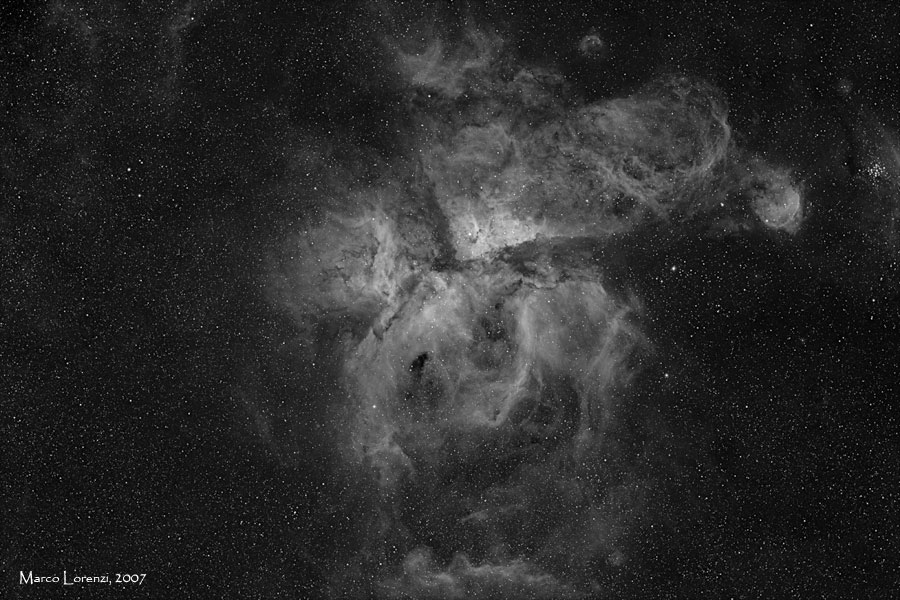
NGC3372 Eta Carinae in H-alpha
Field centered on R.A. 10h 45' & Dec. -59° 30'

A jewel of the southern sky, the Great Carina Nebula, aka NGC 3372, spans over 300 light-years, one of our galaxy's largest star forming regions. Like the smaller, more northerly Orion Nebula, the Carina Nebula is easily visible to the naked eye, though at a distance of 7,500 light-years it is some 5 times farther away. This stunning telescopic view reveals remarkable details of the region's glowing filaments of interstellar gas and dark cosmic dust clouds. The Carina Nebula is home to young, extremely massive stars, including the still enigmatic variable Eta Carinae, a star with well over 100 times the mass of the Sun. Eta Carinae is the bright star left of the central dark notch in this field and just below the dusty Keyhole Nebula, NGC 3324 (Text adapted from APOD). Click here for an enlargement (postcard style) at higher resolution, click here for the HaLRGB image. |
Instrument: |
CCD: |
Exposition: |
Filter: |
Site: |
Author: |
| Apo Pentax SDHF75 (75/f6.7) + Vixen Sphinx SXD | SBIG STL11K, binning 1x1, T=-20°C | Ha (60m) | Optec Ha filter | Maleene station, Mt. Magnet, W.Australia |
M.Lorenzi |
All of the photographs and text on these pages are copyrighted by Marco Lorenzi.
They may not be reproduced, published, copied or transmitted
in any form, including electronically on the Internet or World Wide
Web, without written permission of the author. |